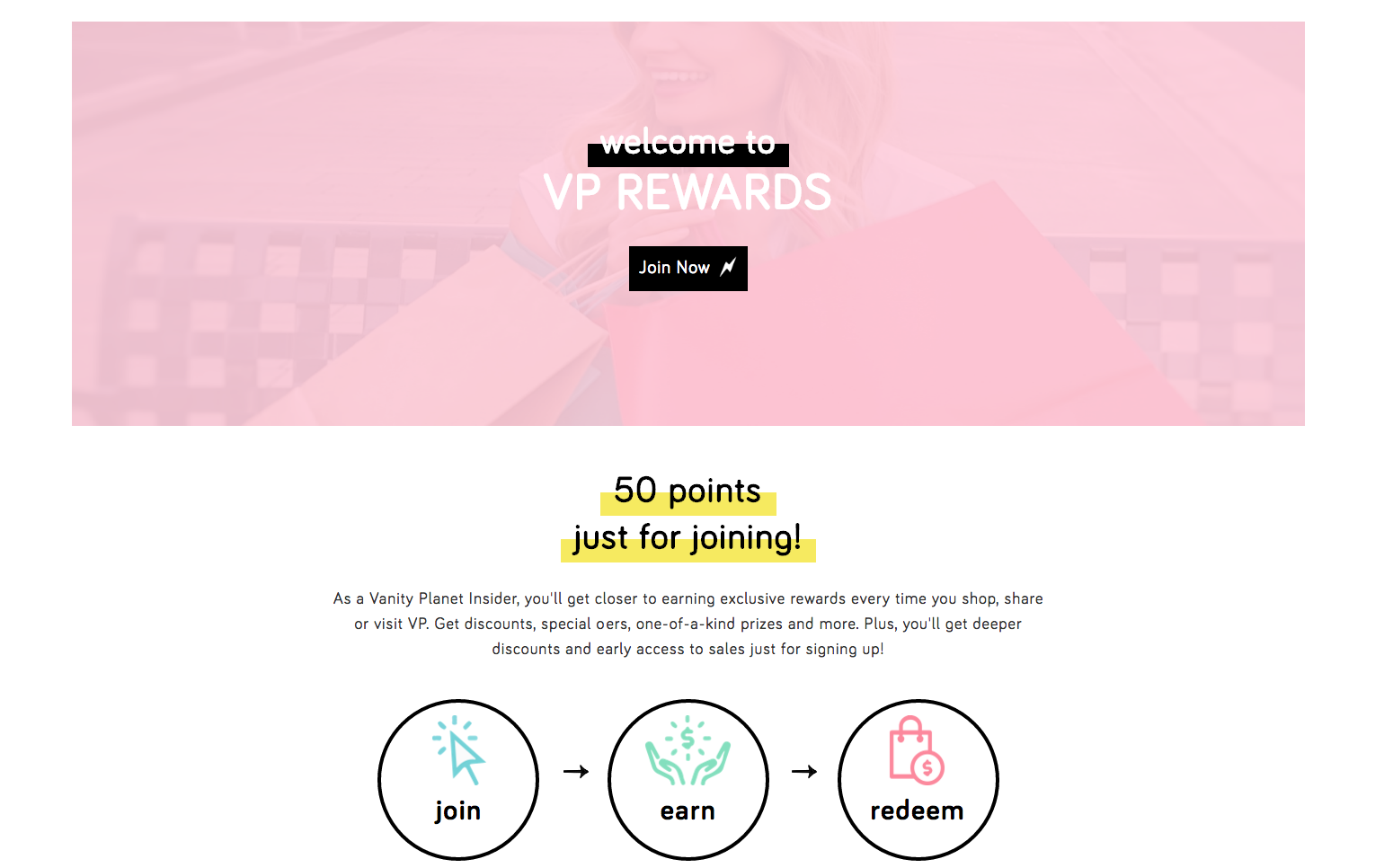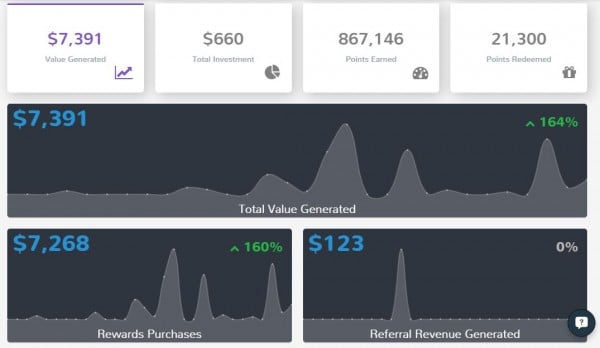We’re getting pretty close to the end of our Campaign Spotlight series, but we’re not quite there yet! In today’s post, we’re going to cover one of our most compelling campaigns – the Newsletter Signup campaign!
What Does the Newsletter Signup Campaign Do?
Put very simply, our Newsletter Signup campaign allows you to offer a financial incentive in exchange for subscribing to your newsletter. Think of it like offering a discount or a coupon to each newsletter subscriber.
When a consumer successfully completes your newsletter campaign, you’ll receive their email address and be able to add them directly to your mailing list.
Why Should I Use It?
If you’re not already using an email-based newsletter to communicate with your customers, we have one suggestion for you: Start one!
You could start a blog on a site like Wordpress and use a newsletter to send out your latest posts, or you could simply send out a newsletter periodically that contains updates about your business, new product releases, big upcoming promotions, information about your latest Swell campaign, or virtually anything else you might want the chance to tell your customers (and potential customers) about.
“Why is it so important to keep in touch with my customers?” you might ask. The answer lies in the Repeat Purchase Pathway – a newsletter converts casual observers to followers, followers to buyers, and buyers to loyal evangelists!
Here are just a few interesting stats to provide some additional perspective on how a strong email newsletter can help take your business to the next level:
- Email marketing (i.e. sending a newsletter) is 40x more successful at acquiring new clients as compared to Facebook or Twitter (McKinsey & Company)
- 50% of newsletter subscribers only consider a newsletter’s influence on their purchase to be “occasional”. Instead, newsletters serve to boost a company’s reputation and build the relationship between purchases (Nielsen Norman Group)
- 66% of people have made a purchase based on a marketing message they’ve received in an email. Next highest? Facebook...at just 20%! (The DMA)
In short, a newsletter can help you earn new clients, engage those who aren’t quite ready to buy, and boost conversion rates into the stratosphere!
Of course, the more newsletter subscribers you have, the more you'll notice results (in the form of top-line revenue). Offering a small reward to get somebody to subscribe to your newsletter will pay off in heaps down the road.
How Does it Work?
You’ll notice that the setup process for our Newsletter Signup campaign is very similar to our other campaigns.
There are two very simple fields in the campaign design screen:
Just name your campaign and select a reward amount per new subscriber that you’ll earn. That’s it!
When a consumer decides to subscribe to your newsletter, you’ll receive a notification with their email address that you can add to your email marketing list.
How Much Should I Pay for a Newsletter Subscriber?
Generally speaking, newsletter subscribers are extremely valuable; when somebody chooses to subscribe to your newsletter, they're agreeing to receive a constant flow of information from your business (provided that you send it!). Moreover, by “opting in” to your newsletter, they’re indicating that they actually want to receive updates from you!
The amount you should be willing to pay for a new subscriber depends on your business; the higher the selling price of your product(s) and the more often a given subscriber purchases from you, the more each one of those subscribers is worth.
Want a shortcut? The average business should pay about $2 – 5 (200 – 500 points) for a new subscriber. Read on if you’d like to know how we came up with that range (and calculate a more precise number for your business).
Here are the Details On How to Calculate the Value of a Newsletter Subscriber
There are two methodologies you can use to calculate the value of a newsletter subscriber; we’ll call them the historical data method or the estimated future value method. If you’ve been running a newsletter for at least 12 months, then use the historical data method. If not, go with the estimated future value method.
Historical Data Method
This method simply looks at your average sales generated by your newsletter in the past and uses that as an estimate for future revenues. Borrowing heavily from a good article from Practical Ecommerce, the challenge comes in determining how much of your revenue from a given time period is attributable to email; it's very difficult to "prove" that a given purchase was the result of one source exclusively.
For example, a customer might decide to buy from you after reading about you in the news, visiting your website once, and then clicking a link in a newsletter she received from you. How do you decide which source gets credit for the purchase? Use the following as a guideline:
Here’s revenue that you should definitely include: sales that come directly from newsletter clicks. Let's say you have an online store, and somebody clicked a link in your newsletter, landed on your website, and made a purchase. That definitely goes into the bucket.
Here’s revenue that you should try to include: spikes in sales around the time you sent a newsletter. If sales are typically relatively steady, but spiked right after sending a newsletter, you’re likely safe to include that incremental revenue as well. This is an especially technique for you “brick and mortar” folks out there.
Once you have an estimate of how much revenue your newsletter has generated in the past 12 months, simply divide that by total number of subscribers to get a value per subscriber for the prior year:
But wait! There’s one more step. We just calculated the value of a subscriber for 12 months, but hopefully many of the people who sign up for your newsletter will continue to receive it for more than 12 months! To make things simple, assume that the average subscriber stays with you for 2 years – so multiply your 12-month value by 2 to get a final value per subscriber:
Total Value per Subscriber = 12-Month Value Per Subscriber * Average Length of Subscriber Engagement (use 2 years a default).
Depending on your business, don't be surprised if you end up calculating a figure that's $25 or more. We recommend starting at $2 – 5 per subscriber though and increasing as you see results.
The Estimated Future Value Method
If you’re new to the newsletter game, that’s ok too -- you're certainly not alone! We’ll just make some basic assumptions about how much revenue you can expect to generate from your newsletter to get to a value per subscriber.
This method is pretty simple: estimate how many transactions an engaged subscriber will make over the course of two years, discount it by the percentage of customers who will be engaged with your newsletter, and multiply it by the average selling price of your goods. In other words:
Value per Subscriber = Average Transactions per Subscriber (over 2 years) * Engagement Rate * ASP (average selling price)
Your ASP should be easy enough to calculate – just look at your historical sales data. If you haven’t sold too much yet, take an average of the products you do have for sale.
Keep in mind that not all of your newsletter subscribers will eventually buy from you – some will be more responsive to your newsletter than others. Start with a relatively low assumption for your engagement rate (10% or so), and adjust it upwards as you begin to see results.
How Much Does the Campaign Cost to Run?
One of the great features about the Newsletter Signup campaign is that it’s 100% free to use! We’re excited to be able to give our merchants access to a campaign that's likely to yield an incredible amount of revenue for no recurring monthly cost.
As always, we can’t wait to see your results!







